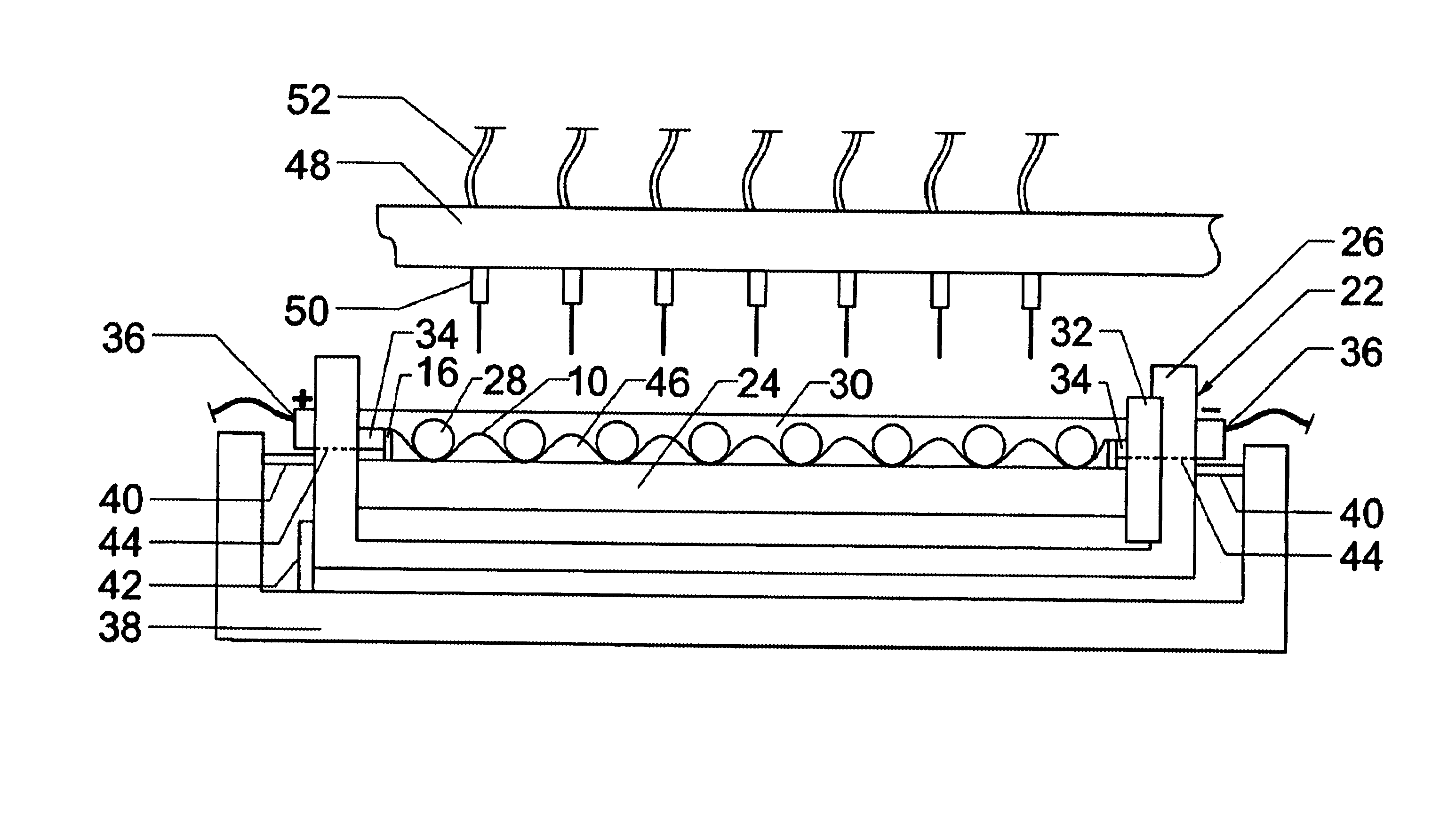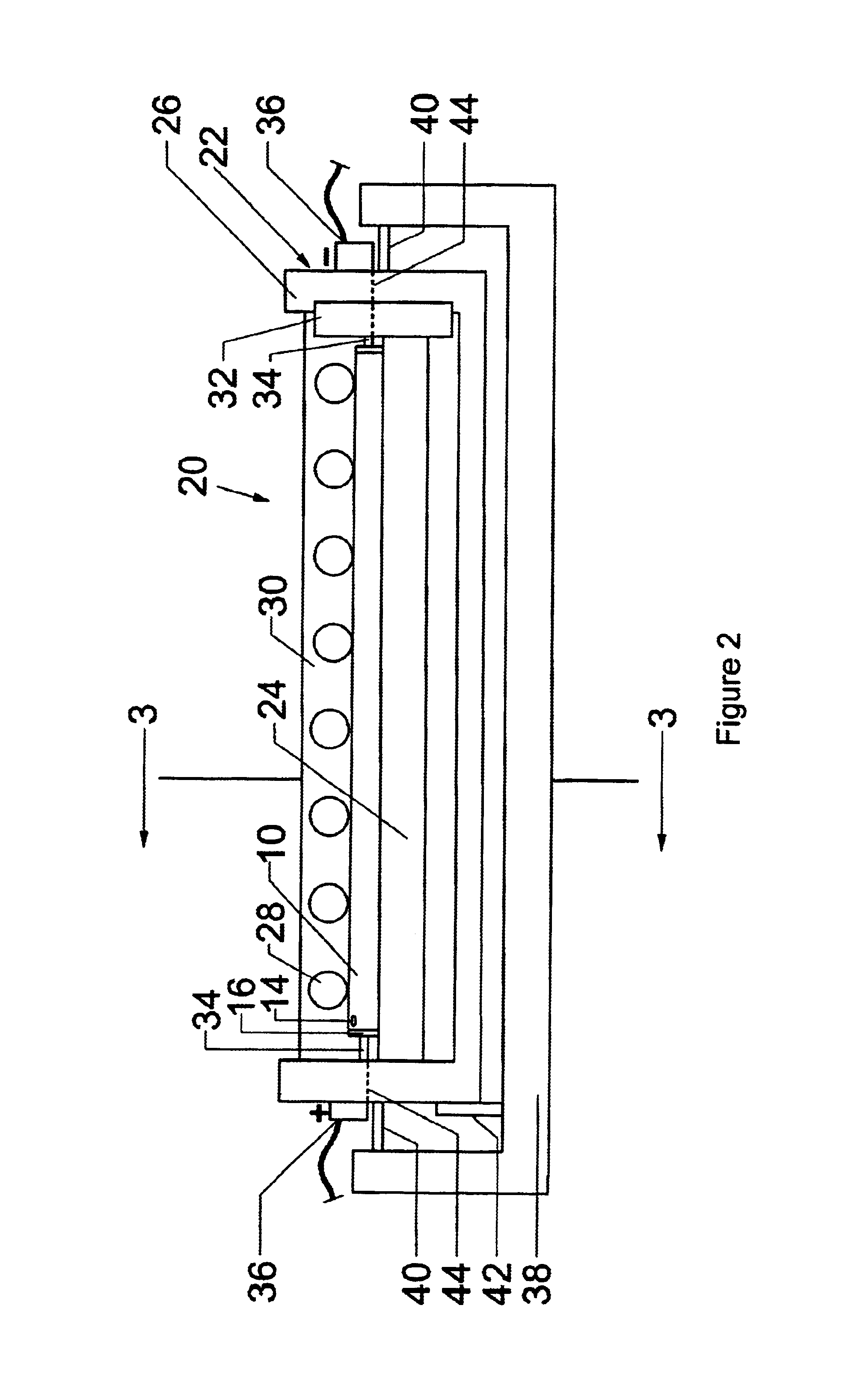Variable-volume disposable isoelectric focusing cell and method of isoelectric focusing
a technology of isoelectric focusing and variable volume, which is applied in the direction of fluid pressure measurement, liquid/fluent solid measurement, peptide measurement, etc., can solve the problems of small priming volume of instruments, complex implementation of these concepts, and small research quantity of protein solutions availabl
- Summary
- Abstract
- Description
- Claims
- Application Information
AI Technical Summary
Benefits of technology
Problems solved by technology
Method used
Image
Examples
Embodiment Construction
The heart of this invention lies in the idea of using an expandable, elastomeric focusing cell to provide a variable-volume isoelectric focusing device. In addition, the deformable nature of the elastomer material of the cell makes it possible to isolate the products of separation into separate compartments of the cell to facilitate product collection free of mixing and contamination.
Referring to the drawings, wherein the same numerals and symbols are used throughout to designate like parts, FIG. 1 illustrates in perspective view an exemplary focusing cell 10 according to the preferred embodiment of the invention. The cell 10 is shown as a flattened tube section 12 made of elastomeric material, preferably rubber latex or silicone rubber. In addition, any other natural or synthetic elastomer that is inert to the solution to be tested and is capable of expanding under internal pressure would be suitable to practice the invention. Besides natural rubber and silicone rubber, there is al...
PUM
| Property | Measurement | Unit |
|---|---|---|
| volumes | aaaaa | aaaaa |
| volumes | aaaaa | aaaaa |
| spherical radius | aaaaa | aaaaa |
Abstract
Description
Claims
Application Information
 Login to View More
Login to View More - R&D
- Intellectual Property
- Life Sciences
- Materials
- Tech Scout
- Unparalleled Data Quality
- Higher Quality Content
- 60% Fewer Hallucinations
Browse by: Latest US Patents, China's latest patents, Technical Efficacy Thesaurus, Application Domain, Technology Topic, Popular Technical Reports.
© 2025 PatSnap. All rights reserved.Legal|Privacy policy|Modern Slavery Act Transparency Statement|Sitemap|About US| Contact US: help@patsnap.com



